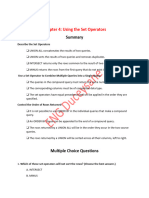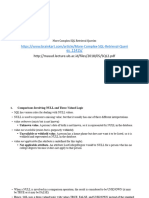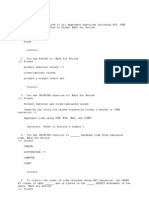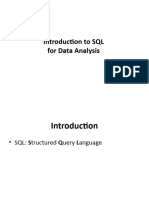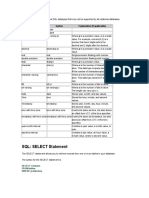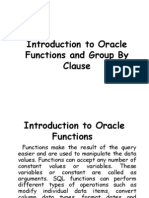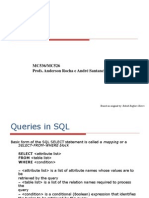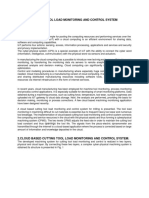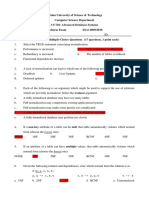0% found this document useful (0 votes)
4 views6 pagesDSC&PLSQL Unit-9
The document covers SQL aggregate functions, including COUNT, SUM, MAX, MIN, and AVG, used to summarize data from multiple tuples. It also explains the use of GROUP BY and HAVING clauses for grouping data and filtering results based on conditions. Additionally, it discusses SQL set operations such as UNION, INTERSECT, and MINUS for combining results from multiple SELECT statements.
Uploaded by
Nata RajCopyright
© © All Rights Reserved
We take content rights seriously. If you suspect this is your content, claim it here.
Available Formats
Download as PDF, TXT or read online on Scribd
0% found this document useful (0 votes)
4 views6 pagesDSC&PLSQL Unit-9
The document covers SQL aggregate functions, including COUNT, SUM, MAX, MIN, and AVG, used to summarize data from multiple tuples. It also explains the use of GROUP BY and HAVING clauses for grouping data and filtering results based on conditions. Additionally, it discusses SQL set operations such as UNION, INTERSECT, and MINUS for combining results from multiple SELECT statements.
Uploaded by
Nata RajCopyright
© © All Rights Reserved
We take content rights seriously. If you suspect this is your content, claim it here.
Available Formats
Download as PDF, TXT or read online on Scribd
/ 6
